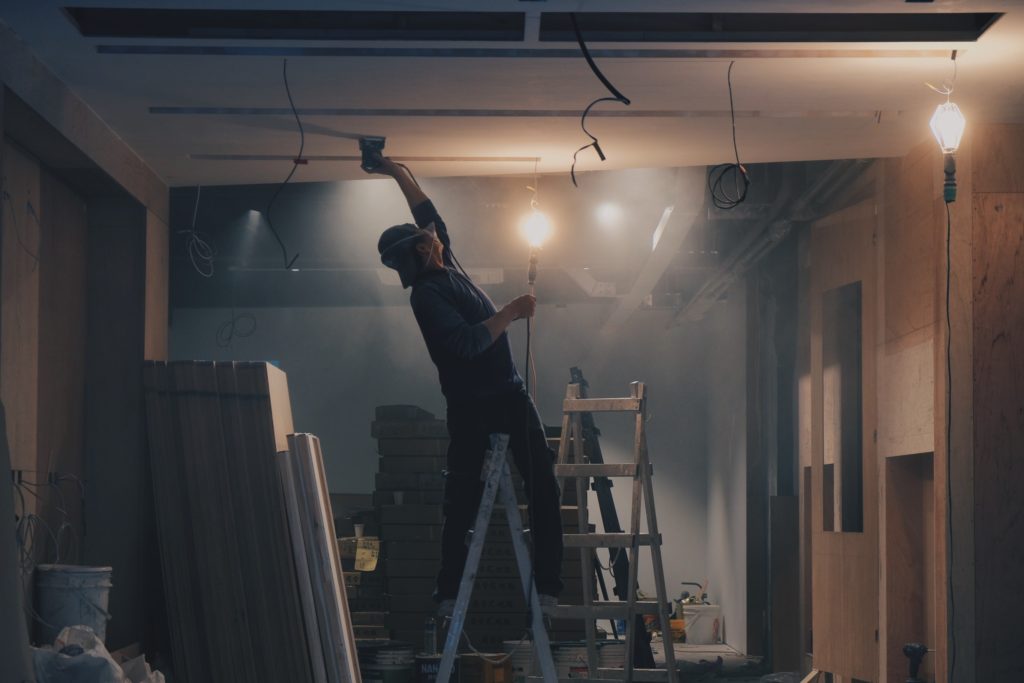Costly Home Improvement Mistakes to avoid…
The process of beginning to take on a home improvement project can be daunting. As if a remodel project isn’t expensive enough… you don’t want to unnecessarily add to the bill. Whether you’re fixing a small item in the house, remodeling a bathroom or doing an entire home remodel and interior design project, here are some home improvement mistakes you don’t want to make.
Take on more than you’re able
When it comes to being human beings, we all bite off more than we can chew. Literally in the sense when you mentally justify going back to the buffet for round three vs. proverbially when rationalizing how much physical work you can take on when thinking about a home remodel, auto restoration or workshop project. It’s just the way we are.
When talking about your home though, there isn’t the quick scenario of laying down and sleeping it off. Things can quickly spiral out of control once you start the demo phase of your project – whether it’s you or a hired contractor. Have you ever opened a wall only to find rotted studs, mold, faulty wiring or worse? Yes, this would have cost more to have the contractor handle it for you, but there something to be said about personal capacity and technical skill-set. Whatever you may be anticipating for your project, it’s going to take you longer and cost you more than you thought. Period.
If you are hell-bent on tackling a project by your lonesome (without a contractor), then just make sure you’re up to the task. The last thing you want to do is tear something apart or bring chaos in your family or home when you have the potential to run out of money, put your own self in danger or don’t have experience in certain areas. For example, if you’re faced with electrical problems for the first time, you may want to stop and hire a professional so you don’t electrocute yourself or worse yet, burn your house down.
Failing To Vet Multiple Contractors
If you’re not tackling it on your own. This one is trite and you’ve heard it all before, but it holds true in everything you may contract out – get at least three bids for a project. You also want to do the basics and ensure that they are licensed, insured, and in good standing with the Better Business Bureau.
You can start by getting a list of recommendations from your friends, neighbors, local lumber yards or even your town’s building inspector – they tend to know some people. Local resources like Angie’s List, Houzz, or even Next Door Neighbor can be invaluable for reviews and recent local experiences with contractors. Then call contractors on your short list and ask them questions. A few good questions to ask may be “How many projects are you currently juggling?” (The more jobs they take on at once, the more likely you’ll end up with delays.) “Do you use subcontractors”, and “how long have you worked with them if so?” These items are first things to derail a project from the getgo.
Getting multiple bids serves a few functions. It will help ensure that you don’t overpay, but it will also give you a sense of what reality is. The lowest bid is not always the best choice. Property Brothers’ Jonathan Scott told HGTV.com. “Some give cheap quotes just to get the job, then tack things on or cut corners and install low-quality products.” NIGHTMARE, but it can be avoided.
Lastly, some projects can be really involved and complex and warrant soliciting multiple opinions. Whereas others, such as replacing a roof, are pretty standardized and should go as expected.
You Skip the Building Permit
You know a guy, who knows a guy that says you don’t need that. Don’t do it. We all know someone who got away with not pulling a building permit and lived to tell the tale. Admittedly, pulling a permit form your city or town and waiting for the inspector to come by and check the progress can be a terrible pain. But if a permit is required, then it’s essential that you comply. Getting caught without one can end up costing you more and skewing your timeline into neverland.
Building inspectors have a crucial role in protecting you from unsafe or bad work. It might save your house from burning down or collapsing. As mentioned above, if caught without a building permit, the city could issue a stop work order which will leave you in limbo indefinitely. Many inspectors will force you to rip what has already been done see electrical and other work behind it. Lastly, should you have a homeowners claim and the insurance company finds in their diligence that a permit wasn’t pulled, they may deny the claim – now costing you thousands more.
You ignore Safety Precautions
We hate to say it, but this stuff happens. If you’re the type that is opting to skip the building permit, then we don’t peg you as a safety precaution guy either 🙂 It’s tempting to skip the protective eye goggles when you’re cutting a board or to forego a HEPA mask even though you’re working with potentially hazardous materials. Depsite whatever time or meaningless dollars saved during this process simply isn’t worth a costly and potentially painful trip the ER or long-term health issues that may result from tools, chemicals and other hazards.
You skip issues for more glamorous “stuff”
It also can be easy to “let something go” if you don’t deem it necessary at the moment, but overlooking a structural issue to tackle cosmetic issues instead is one of the major home improvement mistakes you don’t want to make. We all get excited at the thought of our a brand new bathroom or kitchen, but the last thing you want to deal with after spending $20,000+ on a remodel is to realize that brand new finishings are destroyed by a roof leak or something else. The stuff “you can’t see” is the most important – like pipes, wires, framing, etc. Take care of this first and come back later if you need to.
You play it by ear…
If you’ve done this rodeo before, you know that playing by ear when it comes to tackling items on the wish-list is easy to do. Toss in a few extra items here, go a bit deeper there… Whether you’re doing this project on your own or professionally with contractors, this will cost you time and money, and many people don’t realize how much until it smacks them in the face. If you’ve got a hit list that’s fairly long, then get them all written into the estimate from the get-go and stick to the plan. In the end, you’ll be much better off.
It’s tempting to toss in some of the extra items on your wish list while you’ve got a contractor in the house, and sometimes it can make sense — but it’s always going to cost you more money. If you’ve got a bunch of items on your house to-do list, get them all written into the project estimate from the start, and stick to your plan as much as possible.
Remodeling is a bit like getting tattoos – contagious. As soon as you make one improvement, the rest of the home start to lack pizazz and the temptation to add a room (or whatever) may strike you. Avoid this temptation and tackle it next time.
Remodeling is contagious: As soon as you make one improvement, the rest of the house can look drab by comparison. “Then all of a sudden it’s, ‘This room looks so nice, let’s paint the other room,” Silva said. Try to avoid that temptation.
Attempting a big DIY over a holiday
“I got this“. Have you heard this before? Maybe your husband said it recently. For most DIY’ers, the weekends or holiday are their only chance to dig in and get their hands dirty. If the task is challenging or not necessarily in your lane, the potential of something going wrong is fairly high. Imagine, it’s a “simple plumbing issue” and suddenly a pipe is broken in the wall and flooding the home. That last minute emergency call the pros are the livelihood of their existence. They will charge you handsomely for your error and their inconvenience. If it happens to by Christmas or the 4th of July – Thanksgiving perhaps… you’ll be waiting a while, increasing the damage to your home.
Here’s a simple scenario (an actual real-life memory) that you can relate to. It’s holiday break, the family is coming into town and there’s a squirrel that has made a nest on your roof in the chimney or in the attic. In all of your heroism, you climb on the roof (“I got this!”) to irradicate the issue. Your foot comes loose on a stretch from your footing area and you fall right off the roof. You are now faced with calling a professional and if you want it done before your weekend visitors, it’s going to cost you extra. Worse yet, you’re now paying for the deductible or out-of-pocket expenses at the hospital and limbing around on a crutch for the holiday.
“Once you start down the dark path, forever will it dominate your destiny, consume you it will.” ~Yoda
If you must do it yourself, take a few days of work to have extra time to deal with the inevitable and not have anyone in your way, or potentially harms way. You might even suggest the family stay with grandparents or take a day trip in case things get ugly. If this isn’t an option and your home is used daily, then simply hire a professional. It will be quick and painless and end up costing you less in the end.
Anytime you take on a home improvement project (alone or with the aid of a pro), it’s bound to be more expensive than you thought. So, at the very least you’ll want to adhere to a game plan and some personal policies to ensure that you can control as much as possible throughout the process – for you and for your family and home.



Thanks for sharing, Tiffany – these are all important points that sometimes get lost in the excitement of buying a new home! We’ve featured your blog on Studio Designer’s Facebook – https://www.facebook.com/StudioWebware/posts/2320144694666086 – and Twitter – https://twitter.com/studiowebware/status/981203423025442819 – check it out!